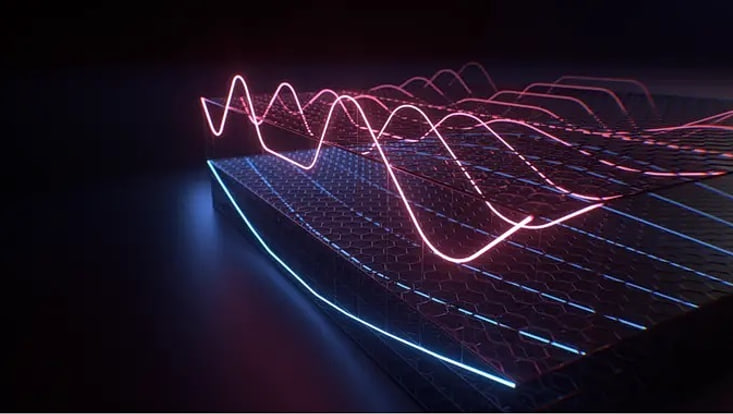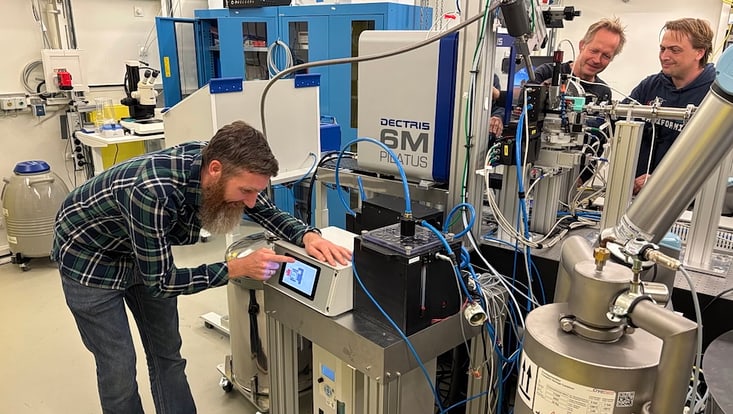Imaging of Matter
How quantum effects drive photosynthesis
7 March 2024

Photo: A. Jha and H.-G. Duan
How do the basic mechanisms of photosynthetic energy conversion work? In the journal Science Advances, an international team of researchers involving Universität Hamburg and the Max Planck Institute for the Structure and Dynamics of Matter report on the role of quantum effects in photosynthesis.
Over billions of years, plant photosynthetic systems have evolved intricate molecular architectures to facilitate efficient energy transfer towards charge separation sites. One particularly prominent protein complex is the reaction center of photosystem II (PSII) as it swiftly separates charges across membranes upon photoexcitation. "However, since the most important energy and charge transfer processes in the PSII reaction center occur on ultrafast time scales, it is extremely difficult to understand what determines the quantum-precise efficiency of these processes," says Prof. Michael Thorwart from the Department of Physics at Universität Hamburg and the Cluster of Excellence "CUI: Advanced Imaging of Matter", who supervised the work together with former CUI researchers Prof. Hong-Guang Duan from Ningbo University and Prof. R.J. Dwayne Miller from the University of Toronto.
How certain effects govern energy transfer and charge seperation
The researchers focused on the role of quantum coherences in mediating the primary charge transfer processes within the PSII reaction center. They sought to understand how quantum effects influence the dynamics of excitonic and charge transfer states in PSII, in particular how these effects govern energy transfer and charge separation.
Two-dimensional electronic spectroscopy is the most popular technique to resolve complex quantum dynamics in photosynthesis or other chemical processes. But, due to the strong spectroscopic congestion, the 2D spectra so far had failed to resolve the discrete excitonic energy states and, with them, the cross peaks, representing coupling of these state, even at low temperatures to 77 K.
The team has succeeded in providing robust evidence of electronic and vibrational quantum coherence by performing 2D electronic spectroscopic measurements at 20 K. At this low enough temperature, where thermal fluctuations do not wash out the coherence, they were able to clearly resolve the electronic coherence lifetime and identify the coherent cross peaks in the 2D electron spectra. By providing a rigorous theoretical description of the energy transfer dynamics that explicitly considers the system-bath interaction and thus respects the true spectral distribution of the surrounding quantum statistical fluctuations, they were also able to clarify the temperature dependence.
Implications for biochemistry, biophysics and renewable energy research
Using careful experimental data analysis combined with thorough theoretical calculations, the scientists determined the coherent effect in the photoinduced charge transfer of the chromophores Chlorophyll D1, Pheophytin D1, PD2, and PD1. The results could potentially advance our understanding of the fundamental processes underlying photosynthesis, which has implications for various fields including biochemistry, biophysics, and renewable energy research.
Citation
A. Jha, P.-P. Zhang, V. Tiwari, L. Chen, M. Thorwart, R. J. D. Miller, Hong-Guang Duan
“Unraveling Quantum Coherences Mediating Primary Charge Transfer Processes in Photosystem II Reaction Center”
Sci. Adv. 10, eadk1312 (2024)


